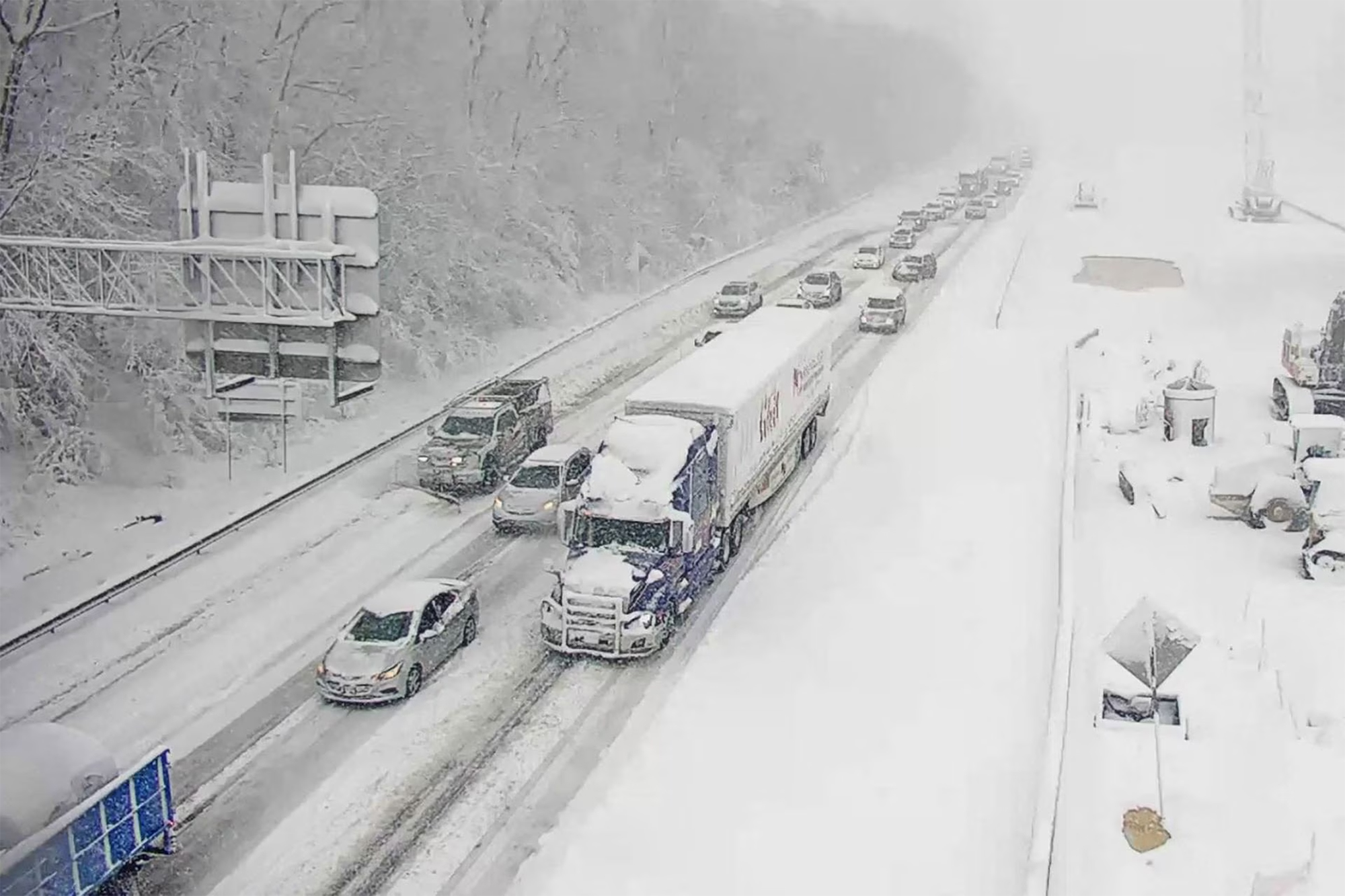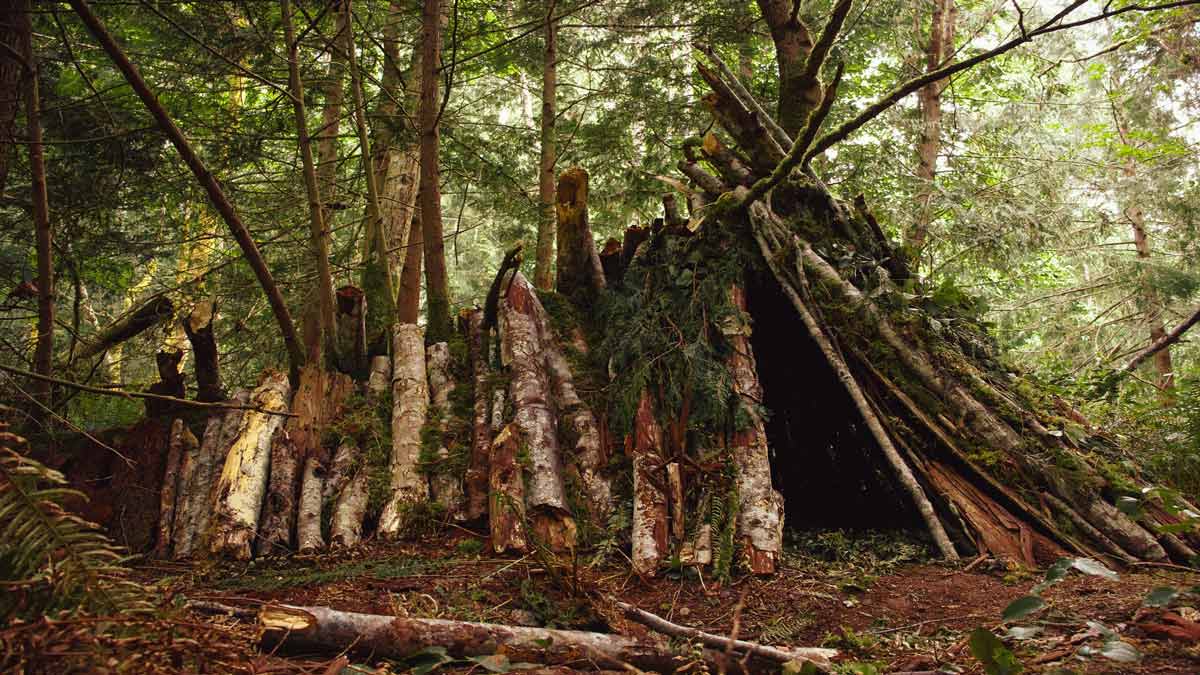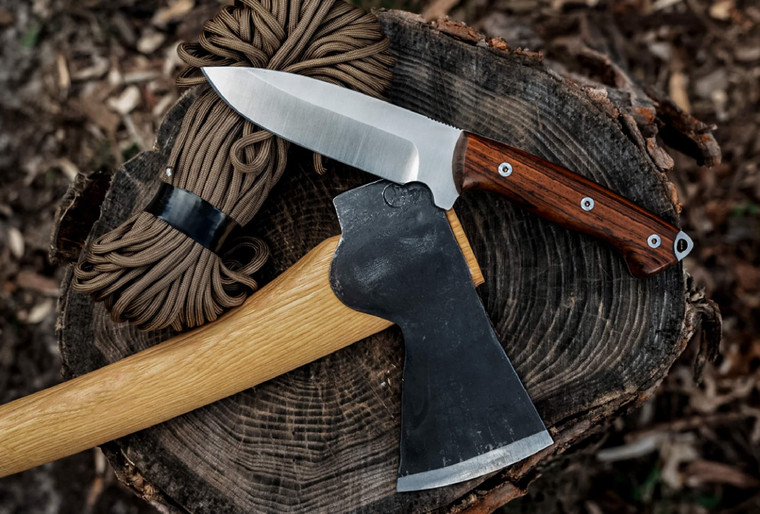Stranded! Here Are Your Roadside Survival Tips
Posted by Warrior Poet Society on Aug 17th 2023
Getting stranded on the side of the road isn't normally a life-and-death situation. You just call AAA or other roadside assistance or the local towing service. Getting stranded in the middle of nowhere or in a snowstorm or in the midst of the zombie apocalypse–those can be terrifying situations if you aren't prepared for survival. Pro knife thrower and survival guide Jason Johnson walked John Lovell through the worst case scenario and how to stay alive.
It's not always as easy as waiting in your car until help arrives. In the middle of the summer heat, it's hard to think about winter coming and the possibility of getting stranded in a blizzard. But now's the perfect time to learn the skills to survive if something like that happens to you.
Dangerous situations like this happen all the time. An accident backs up traffic for miles and a snowstorm hits, as has happened in Atlanta and other cities a few times in recent years. Or–suddenly all the gas stations are out of gas and you're out in the middle of nowhere when your tank runs dry.
Or worse yet, the tank is dry and gas stations are also on empty–all because civil unrest has halted the supply chain. You're out of gas, you're on foot, and now you're afraid the marauders are on their way.
Roadside Survival Tips
Worst Case Scenarios Do Happen

Prepare your mind now so you can survive later.
In any of these scenarios, you'll want to find a better place to shelter than inside your vehicle, where deeper snow, hypothermia, sliding cars, zombies, and the hordes are coming to get you.
Come up with your own scenario. The point is, in the event that you need to abandon ship and shelter elsewhere, how do you set up camp safely and effectively so you can weather the "storm."
Jason says: "Unless you have basic gear and provisions [sleeping bag, extra clothes, etc.] we can't sleep in our vehicle when it's super cold. Even then a vehicle can be a death trap. Depending on the situation, if you're plumbing into exposure-level temperatures, we want to get off the road–especially if you can be hit by another vehicle or get covered up with snow. Then you'll become invisible and possibly suffocate."
Gather Survival Resources from Your Vehicle
It's almost guaranteed that your car has some items and materials that will aid in your comfort and survival. If you've been a Warrior Poet fan for a while, chances are your car or truck are packed with a little more useful stuff than the average motorist.
But let's say you decided to take a rental or borrow a friend's car or something, and you left most of your gear at home. Now what?
Maybe you have a water bottle someone forgot. You have one of those reflective windshield covers. That's a sleeping mat. As are your floor mats. Perhaps you have a pocket knife. Maybe you carry a mylar blanket and cordage in your backpack.
In a real life-and-death situation, Jason says your vehicle has even more useful resources. But it involves cutting out your seat padding and even more extreme measures.
"There's a lot you can do with your vehicle, depending on the situation. I could turn this into a heated tin can. It depends on how much we want to destroy it. I could strip the whole inside of the vehicle and turn that into the base for a camp. It depends on how long you're stranded and how extreme the situation."
Prepare the Essentials: Shelter, Heat, Safety

Shelter location is critical.
As Jason showed me (John Lovell) what to consider as you look for space and materials, he talked about wind direction and about any existing formation of trees or ground that would save extra work in the construction of shelter.
"The jet stream's coming from the west, and considering where we are on the hill and that wind will hit us," Jason said, pointing out a number of trees that could quickly be adapted as a shelter structure. "Because I've got to build everything from scratch. I can start with that structure. I've already got a hanging tree I can work with."
When asked whether he'd ever snuggled with a grown man to survive, he changed the subject to how big the shelter should be for two grown men. I took this as a maybe. PRO TIP: Don't talk about snuggling to a man with a hatchet.
Also, it's a good idea–unless you're trying to hide from marauders–if you've left your vehicle, leave some sort of notes with the vehicle, preferably on the front windshield and back window of the vehicle "Stranded. Call for Help. Honk a Horn If You Read This." You also want to try making emergency calls from a mobile device if possible.
Construct the skeleton of the lean-to shelter and carefully line the skeleton with your mylar blanket.
Gather multiple lengths of "beams" as you collect wood for building shelter's supports and roof/thatching. Use your paracord or other cordage to secure the support structure to trees and to each other. Then, for roofing, create a thick layer of green pine boughs and other branch material.
The emergency blanket you'll have (since everyone should carry one everywhere) can be used to line the inside of your shelter–carefully attached to the skeleton, hopefully without tears or holes. The reasons for this construction are important.
First, the fire you'll build will be positioned in the mouth of the shelter, with its heat reflected toward you by the mylar blanket.
Second, if you clear the ground under the shelter, removing anything burnable, you later have the option of pulling in hot coals from the fire. This is perhaps contrary to what you learned in Boy Scouts or elsewhere recommending pinestraw and leave layers for insulation. Those hot coals, though, will provide more heat throughout the night than any body heat the blanket of detritus will insulate.
When processing wood for fire, think small.
The smaller and thinner the wood is, the less it matters when it's damp. So use your knife to split wood, to create shavings, etc. The more you do at this stage, the easier it'll be to create a big pile of hot coals. And if you're trying to survive the dead of winter, time is of the essence.
Don't set your shelter on fire.
While you're building the fire at the mouth of your shelter, don't build it so close or so big that you catch your shelter and yourself on fire. Flame is important for warmth, but emphasizing quality of coal bed is more important.
Food and Water for Long-term Survival
In a short term emergency, having stashes of food and water would be a nice bonus, but if it's a matter of finding shelter before nightfall, those essentials can wait until morning. But you would need to eventually track down a source of water, preferably with a way to purify through boiling or other means.
And as far as the ribeye you're craving, that depends on your ability to shoot or trap enough game to make it worth the energy. Hopefully though this gives you some useful, lifesaving, ideas for any Worst Case wilderness survival scenarios you may encounter.
Hopefully you'll have a lot more survival gear and know-how that most people No matter how much you know, it never hurts to know more, and to train these ideas in your own training scenarios. Train Hard. Train Smart. Keep Survival Gear in Your Car.

